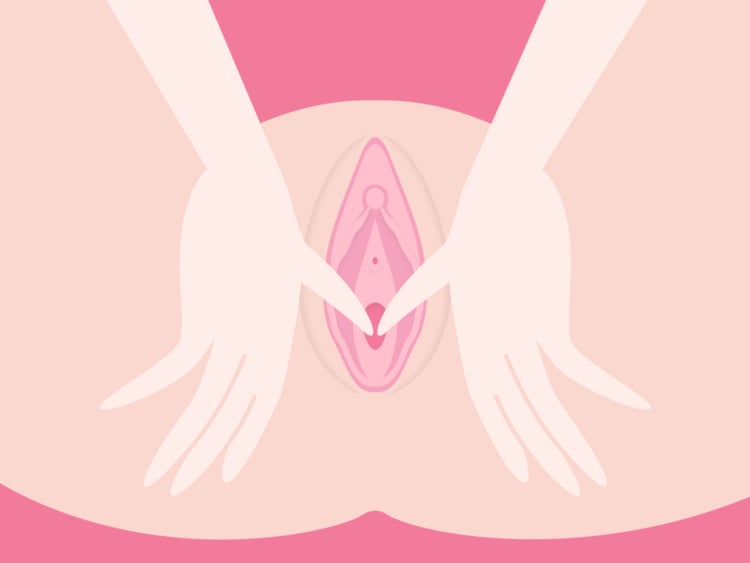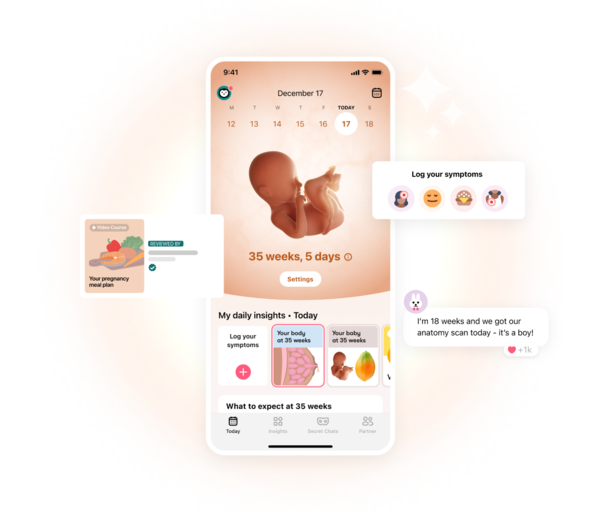It’s natural to be worried about vaginal tearing during delivery but perineal massage can help decrease the chances of that happening by gently stretching the area. Read on to find out more
-
Tracking cycle
-
Getting pregnant
-
Pregnancy
-
Help Center
-
Flo for Partners
-
Anonymous Mode
-
Flo app reviews
-
Flo Premium New
-
Secret Chats New
-
Symptom Checker New
-
Your cycle
-
Health 360°
-
Getting pregnant
-
Pregnancy
-
Being a mom
-
LGBTQ+
-
Quizzes
-
Ovulation calculator
-
hCG calculator
-
Pregnancy test calculator
-
Menstrual cycle calculator
-
Period calculator
-
Implantation calculator
-
Pregnancy weeks to months calculator
-
Pregnancy due date calculator
-
IVF and FET due date calculator
-
Due date calculator by ultrasound
-
Medical Affairs
-
Science & Research
-
Pass It On Project New
-
Privacy Portal
-
Press Center
-
Flo Accuracy
-
Careers
-
Contact Us
Perineal massage: What you need to know before giving it a go


Every piece of content at Flo Health adheres to the highest editorial standards for language, style, and medical accuracy. To learn what we do to deliver the best health and lifestyle insights to you, check out our content review principles.
If you’re nearing your due date, you’re probably super excited to meet your little one, count their toes, and give them a name. However, before the newborn cuddles, there’s the small matter of labor and delivery.
To prepare for the big day, lots of us attend birthing classes, pack a baby bag, and read our hospital notes, but you can also go one step further and help prepare your body with perineal massage.
Read on to learn more about the advantages of perineal massage if you’re giving birth for the first time.
Take a quiz
Find out what you can do with our Health Assistant
What is perineal massage?
You might have heard of the perineum before — and once you’re pregnant, people just love to tell you about it. But for those not in the know, your perineum is the area of tissue between your vagina and your anus, and it’s attached to all the muscles that support your reproductive organs, bowels, and bladder — the pelvic floor.
Perineal massage is the act of gently stretching and massaging this area to help soften and relax the tissues, increase flexibility, and reduce the risk of tearing during childbirth. It can also help you get used to feeling sensations in and around the area, preparing your body for what’s to come. You can do a perineal massage by yourself or with the help of somebody else like your partner.
If you deliver your baby vaginally, all the muscles in your pelvic floor work together to stretch and contract, which allows your baby to pass through the birth canal. As your baby’s head crowns (comes through your vaginal opening), your muscles stretch far enough to push their shoulders and body through. So the ultimate goal of perineal massage is to minimize pain and reduce your chances of tearing at this stage of your baby being born.
According to a large study conducted by Oxford University, roughly 90% of women will experience some tearing during their first vaginal delivery, and while that figure sounds a little overwhelming, it might help to know that the majority of cases are superficial (affecting only perineal skin and the outer layer of your vagina) and should heal on their own.
Medical professionals categorize vaginal and perineal tears by degree of severity:
- First-degree tears tend to be most common, impacting the skin on the surface of your perineum (closest to the vaginal opening). They usually heal on their own within a few weeks of childbirth, but sometimes need stitches.
- Second-degree tears may require stitches because they tend to go deeper than the surface skin of your vagina into the perineal muscles, but not the anal muscles.
- Third-degree tears affect your perineum as well as the muscles around your anus and also require stitches.
- Fourth-degree tears are the most severe, but only happen in less than 1% of cases. They impact your perineum, anus, and rectum, which means a longer recovery time.
Does perineal massage really help?
In a nutshell: yes. A study by Fort Belvoir Community Hospital in the U.S. found women who practice perineal massage prior to delivery reported less vaginal pain in the weeks after. But there is a caveat here: Perineal massage is helpful if you’re giving birth vaginally not for the first time.
Regular perineal massage (from 34 weeks of pregnancy) may also decrease the need for an episiotomy for first-time vaginal deliveries, according to a study published in the Obstetrics and Gynecology Green Journal. An episiotomy is a rare procedure that takes place during childbirth that involves surgically cutting the perineum if it doesn’t stretch enough for your baby’s head to pass through.
When is the best time to start perineal massage?
There’s no hard and fast rule, but experts generally advise starting perineal massage when you’re around 34–35 weeks pregnant and doing it up until your due date.
Sometimes perineal massage is performed during prenatal checkups and even during labor and delivery to further prevent tearing.
How to do perineal massage — tips and techniques

Perineal massage can be done on your own or with the help of your partner. After consulting your healthcare professional to determine the appropriate frequency of perineal massage for your pregnancy, give these steps a try:
- Wash your hands thoroughly before doing a perineal massage.
- From a comfortable, seated position, spread your legs apart with your knees bent and find your perineum with your fingers. If you’re doing the massage on your own, use a mirror for better visibility.
- Apply a small amount of natural lubricant, like coconut oil or olive oil, or KY-Jelly to your fingertips or thumb and insert it 2 inches (5 centimeters) into your vagina.
- Gently press the right side of your vaginal wall towards the right and hold pressure there for a few breaths.
- Slowly sweep and press downward, holding pressure down towards your rectum. Then sweep and press over to the left. Trace and retrace this “U” shape a few times in each direction.
- As you become more accustomed to this, you can press downwards and stretch the vaginal walls apart at the same time. (You’ll need two hands for this!) Hold for 2 to 3 minutes.
Remember to start with a gentle touch and gradually increase pressure over time. Breathe deeply and slowly throughout the perineal massage to keep your muscles relaxed. Apply enough pressure that you feel a slight burning, stinging, or tingling, but never intense pain.
Perineal massage is not recommended if you have placenta previa or vaginal bleeding in your second and third trimesters. If you have herpes or other vaginal infections, please exercise caution with perineal massage because it could cause them to spread.
Perineal massage: The takeaway
Perineal massage is an easy and effective way for you to help prepare your body for vaginal delivery and may reduce your chances of tearing. While it doesn’t guarantee you won’t need stitches, it can help you get used to and accept some of the sensations you might feel when welcoming your baby into the world.
Like everything pregnancy-related, be sure to consult your medical professional to find out if perineal massage is right for you before starting.


Hey, I'm Anique
I started using Flo app to track my period and ovulation because we wanted to have a baby.


The Flo app helped me learn about my body and spot ovulation signs during our conception journey.


I vividly
remember the day
that we switched
Flo into
Pregnancy Mode — it was
such a special
moment.
Real stories, real results
Learn how the Flo app became an amazing cheerleader for us on our conception journey.
References
American Academy of Family Physicians. “Antenatal Perineal Massage to Prevent Birth Trauma.” AFP Journal, 2014, www.aafp.org/afp/2014/0301/p335.html.
Royal College of Obstetricians and Gynaecologists. “Reducing Your Risk of Perineal Tears.” RCOG, www.rcog.org.uk/en/patients/tears/reducing-risk.
“Perineal massage in the weeks leading up to delivery helps some women avoid episiotomy.” BMJ : British Medical Journal vol. 332,7542 (2006): 0.
“Vaginal Tears in Childbirth.” Mayo Clinic, 11 Oct. 2019, www.mayoclinic.org/healthy-lifestyle/labor-and-delivery/multimedia/vaginal-tears/sls-20077129?s=4.
Aasheim V, Nilsen A, Reinar L, Lukasse M. “Perineal Techniques during the Second Stage of Labour for Reducing Perineal Trauma.” Cochrane Database of Systematic Reviews, 2017, www.cochrane.org/CD006672/PREG_perineal-techniques-during-second-stage-labour-reducing-perineal-trauma.
“Incidence of and Risk Factors for Perineal Trauma: A Prospective Observational Study.” NCBI, www.ncbi.nlm.nih.gov/labs/pmc/articles/PMC3599825.
Lieuallen, Emily DO1; Brennan, Michal DO, MA, FAAFP2. “Does third trimester antenatal perineal massage improve perineal outcomes for vaginal delivery?” Evidence-Based Practice: January 2014 - Volume 17 - Issue 1 - p 11-12 doi: 10.1097/01.EBP.0000540554.74004.a9
Practice Bulletin No. 165: “Prevention and Management of Obstetric Lacerations at Vaginal Delivery.” Obstetrics & Gynecology: July 2016 - Volume 128 - Issue 1 - p e1-e15 doi: 10.1097/AOG.0000000000001523
History of updates
Current version (17 March 2022)
Published (30 December 2019)
In this article

Get your personal guide to pregnancy with the Flo app
-
Follow your baby's growth week by week
-
Get expert info on symptoms, safe foods, and more
-
Chat with other parents-to-be




